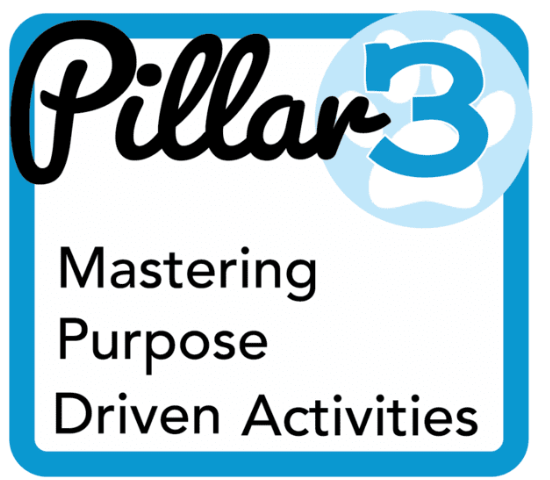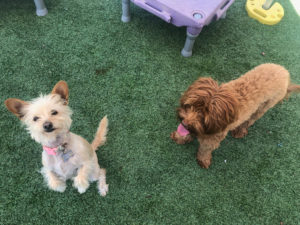
WALKING, TETHERING, PLAYING, PLACE
This is what you are doing when your dog is not in your crate.
Dogs love order, and when you practice leadership and boundaries in these activities you are building a solid foundation with your dog.
If you need a refresher on our Pillars of Pack Leadership, read PIllar 1 and Pillar 2.
This week we focus on PLAY!

Best Way to Play with your Dog (especially if they are going to be a therapy dog)
All good games have rules, and playing with your dog is no different. There is no limit to the types of games you can play with your dog. If he likes it and you like it, turn it into a game.
In my online video membership group, Aly’s Insider Club, I have many game ideas for you to play with your dog (Come When Called games, hide n seek games and more) Just ensure that the game begins and ends upon your invitation and that there are rules to your play.
For example, if you want to play fetch, great! Make sure your dog comes back to you and sits. You can throw a toy and have a dog bring it back to place, and trade a treat for the toy, working on “get it, bring it, leave it.” Remember, no game is fun if a bully shows up or if the rules are broken. Never allow rude or inappropriate behavior while playing your game. If those behaviors show up, get a long line back on our dog during play!
How do you know if play is appropriate?
If you can interrupt a play session by stepping into a dog’s space while applying indirect pressure and your dog acknowledges you, that is a good indicator he is in the correct mindset with the correct energy. Play time isn’t “lose your brain” time for your dog. Games should be able to pause and then resume. Be wise and bring play into check before things spin out too much. Even when dogs are playing with other dogs, step in before things go too far. If he gives you a blow-off acknowledgement (kind of like a “yeah, yeah, yeah, don’t bother me” attitude), try stepping into your dog’s space and keeping the indirect pressure up until he yields, offers a sit, or he lies down. Then, allow play to resume.
Your “check in” is essential in helping dogs maintain a balanced state of mind. The most important part of checking in is that you must be willing and prepared to enforce rules—always. If your dog ignores or runs away from you, purposeful play has mutated into something not beneficial to your relationship. Get a leash or long line back on your dog during play so that you can apply direct pressure to get the respectful pause in the game. Once you’ve achieved it, great! Back to your game you go! You should have a minimum of two great play sessions a day that go for 20-30 minutes.
If you want to learn more about Aly’s Pillars of Pack Leadership, take her online class.
